Abstract
Faeces obtained from 1,163 children (including 66 newborn babies) were analysed in parallel for the presence of rotavirus particles using two enzyme-linked immunosorbent assay kits. The kits had been formulated by the WHO Collaborating Centre for Reference and Research on Rotavirus (WHO-ELISA kit) and by DAKOPATTS (DAKO-ELISA kit) to be suitable for use in laboratories in developing countries. The kits were evaluated in laboratories in Burma, Chile, India, Mexico, Pakistan, Sri Lanka and the United Kingdom. Comparison of the results obtained with the two kits indicated that the DAKO-ELISA had an overall sensitivity of 97% and a specificity of 97% relative to the WHO-ELISA. In individual laboratories the DAKO-ELISA (K349) kit had a sensitivity in the range 90-100%, and a specificity of 85-100%. The kit showed a sensitivity of 100% and a specificity of 98% in assays on faeces obtained from newborn babies. We conclude that the DAKO-ELISA is as sensitive and specific as the WHO-ELISA for the detection of rotavirus antigen in faeces.
Full text
PDF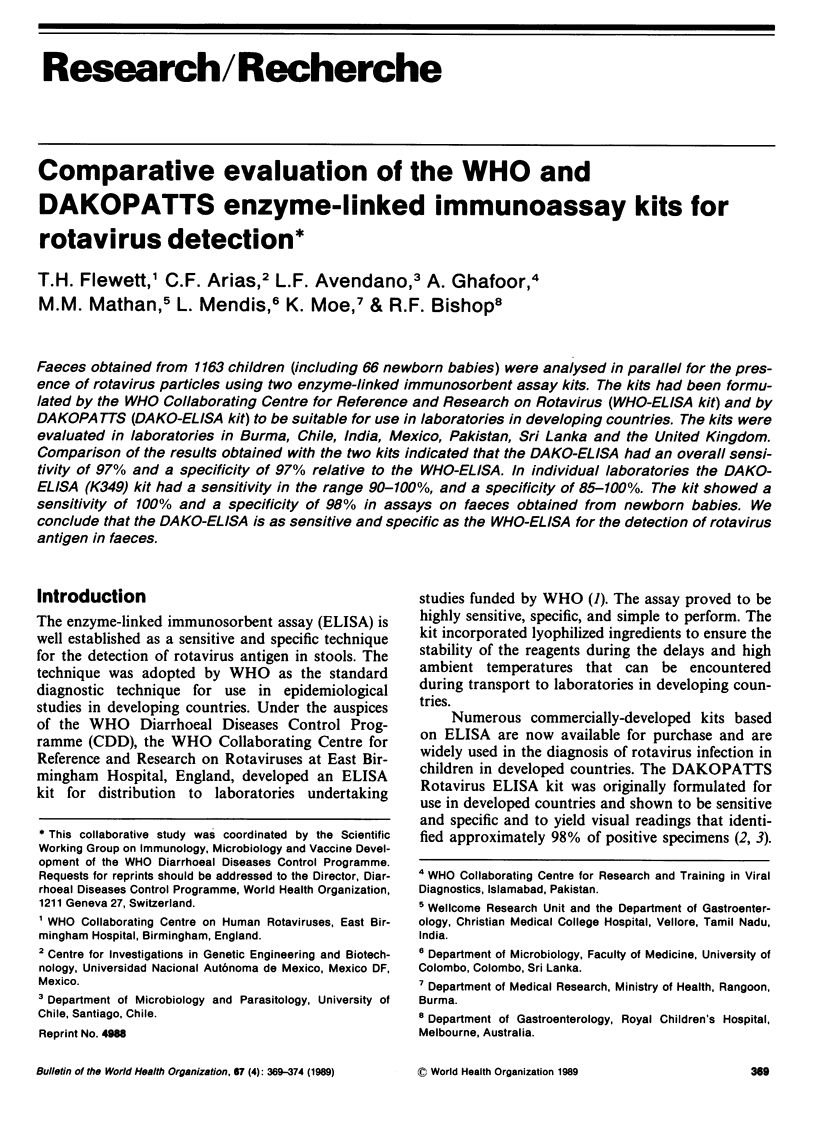
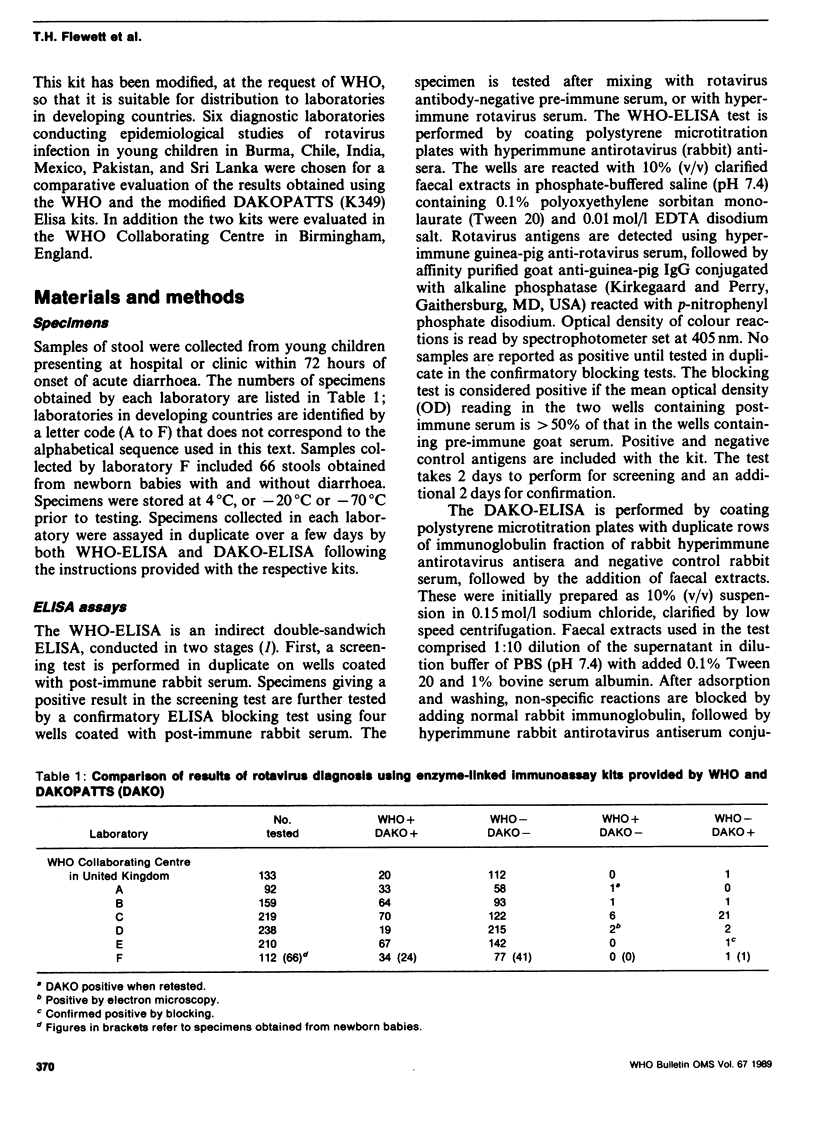
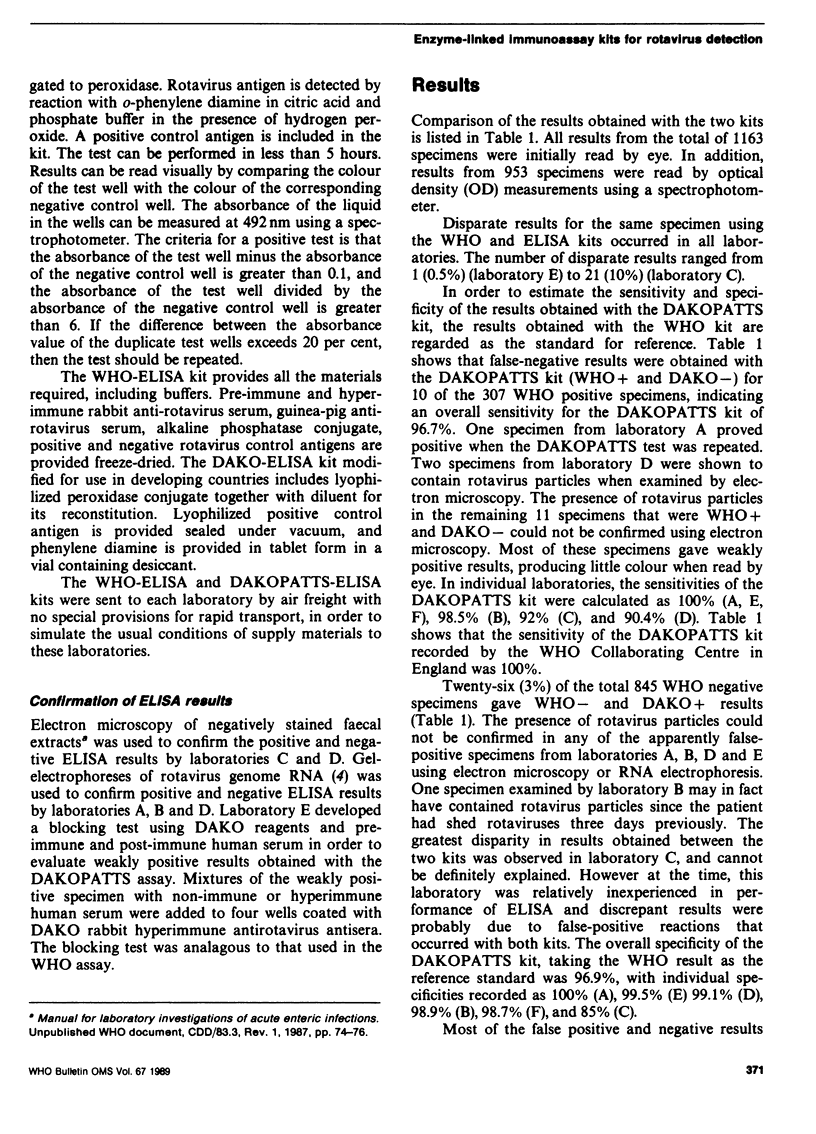
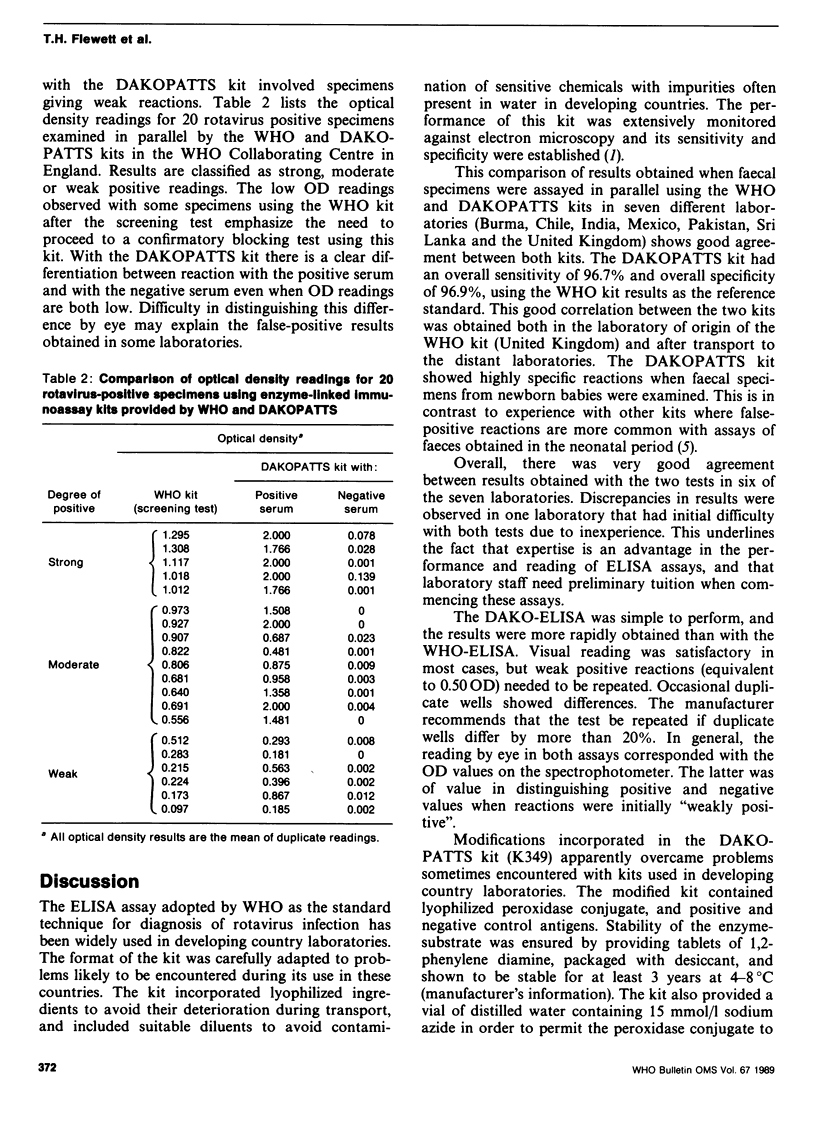
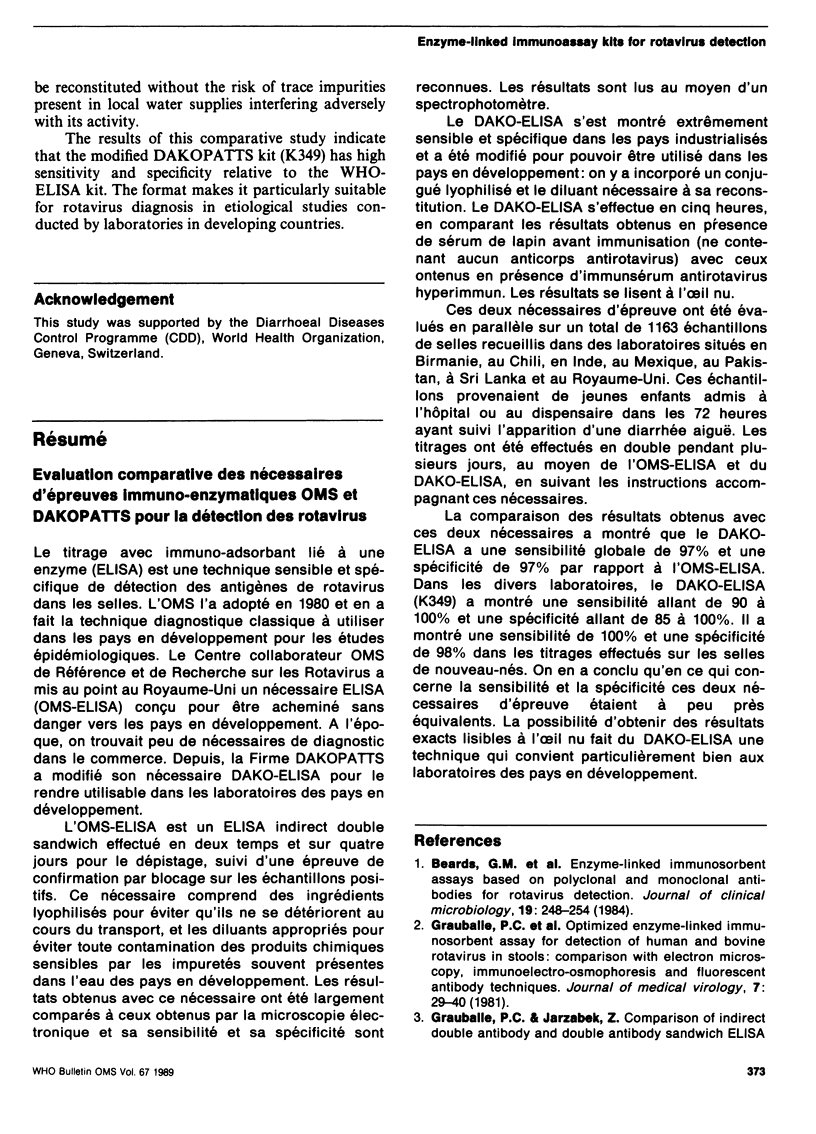
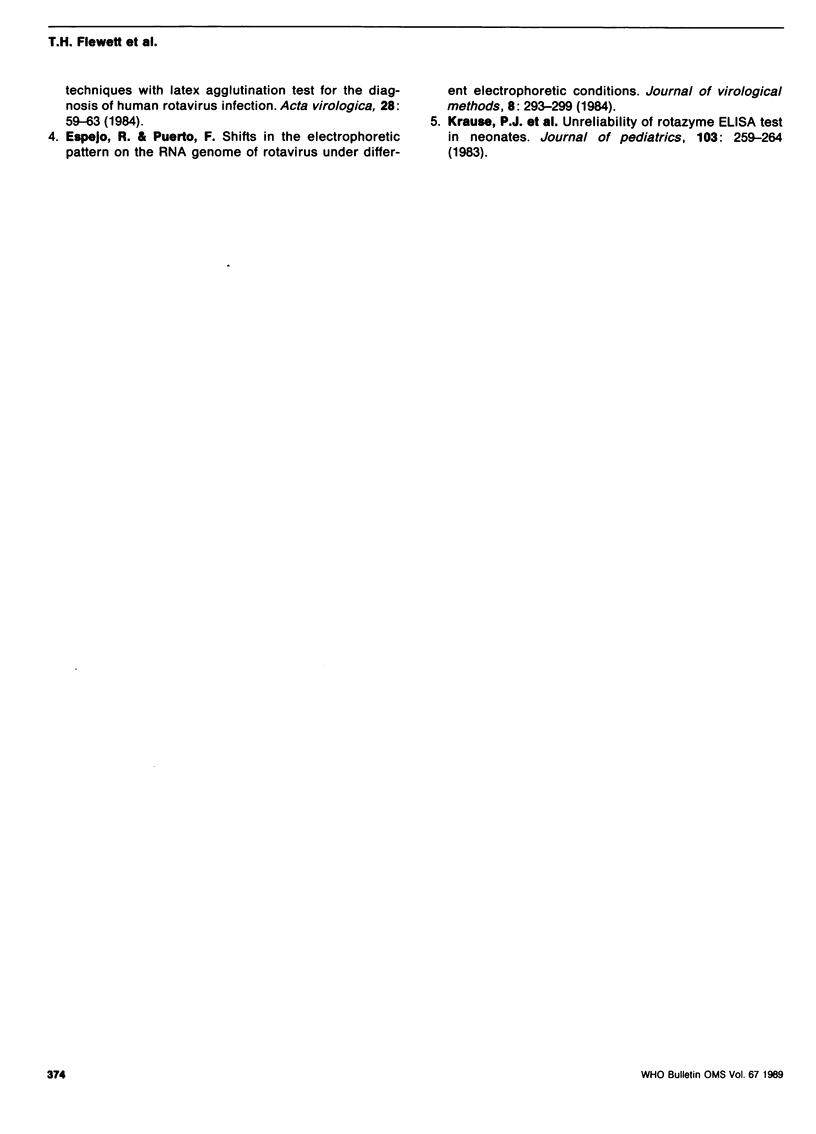
Selected References
These references are in PubMed. This may not be the complete list of references from this article.
- Grauballe P. C., Vestergaard B. F., Meyling A., Genner J. Optimized enzyme-linked immunosorbent assay for detection of human and bovine rotavirus in stools: Comparison with electron-microscopy, immunoelectro-osmophoresis, and fluorescent antibody techniques. J Med Virol. 1981;7(1):29–40. doi: 10.1002/jmv.1890070104. [DOI] [PubMed] [Google Scholar]
- Krause P. J., Hyams J. S., Middleton P. J., Herson V. C., Flores J. Unreliability of Rotazyme ELISA test in neonates. J Pediatr. 1983 Aug;103(2):259–262. doi: 10.1016/s0022-3476(83)80361-8. [DOI] [PubMed] [Google Scholar]


